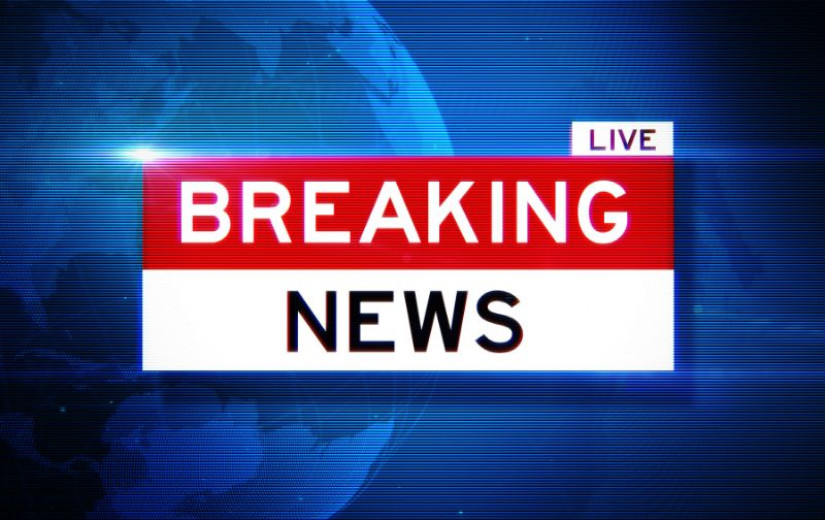
Welcome to Foreign Policy’s South Asia Brief.
The highlights this week: U.S. President Donald Trump’s tariff reversal benefits some South Asian states, Pakistan hosts a forum to court investment in its untapped mineral reserves, and India signs a controversial bill on Muslim properties into law.
Sign up to receive South Asia Brief in your inbox every Wednesday.
Sign up to receive South Asia Brief in your inbox every Wednesday.
By submitting your email, you agree to the Privacy Policy and Terms of Use and to receive email correspondence from us. You may opt out at any time.
✓ Signed Up
U.S. Tariff Reversal Brings Some Unexpected Relief
On Wednesday, U.S. President Donald Trump announced that he would pause implementation of his so-called reciprocal tariffs for 90 days, citing talks with other countries on trade.
“Nothing is over yet, but we have a tremendous amount of spirit from other countries,” Trump said. With the notable exception of China, U.S. trade partners will face only a universal 10 percent tariff, according to the White House.
U.S. markets climbed on the news after having fallen precipitously following Trump’s initial April 2 declaration. The new tariffs were set to hit every country in South Asia—though some more than others. Now, countries face some unexpected relief—along with further uncertainty.
Though Afghanistan, Bhutan, the Maldives, and Nepal were already targeted with just the 10 percent levy imposed on all countries, the rest of the region was grappling with reciprocal tariffs: Sri Lanka (44 percent), Bangladesh (37 percent), Pakistan (29 percent), and India (26 percent).
The United States’ $45.7 billion trade deficit with India—the highest of any country in the region—explains why it was initially hit, even though it preemptively lowered some tariffs and pledged to import more U.S. goods.
New Delhi and Washington were already engaged in trade talks in the pursuit of a bilateral deal to reduce tariff and nontariff barriers. U.S. Secretary of State Marco Rubio and Indian External Affairs Minister S. Jaishankar spoke on Monday, discussing tariffs and trade.
Bangladesh, Pakistan, and Sri Lanka have much lower trade deficits with the United States than India, and their overall bilateral trade volume with the United States is much lower. That they were slapped with higher tariffs on April 2 than India can largely be attributed to the fact that, according to the Trump administration, they charge higher tariffs on the United States.
Unlike China and some other global powers, most South Asian countries are too economically fragile to take retaliatory measures and risk an all-out trade war with the United States. And unsurprisingly, the region responded to the initial announcement with either silence or offers of talks—which will likely accelerate during the pause.
The four countries hit only with the 10 percent tariff from the start—which rank among the region’s smallest economies—have not had a formal public reaction and are likely to stay off Washington’s radar.
During the next 90 days, South Asian countries will strive to avoid the full implementation of Trump’s reciprocal tariffs. Bangladesh, Pakistan, and Sri Lanka are all experiencing or recovering from severe economic stress, and they all count the United States as their top export destination. Most of their exports are garments and textiles.
Their governments had reached out to U.S. officials for talks, and they committed to buying more U.S. imports to ease their trade deficits with the United States. At the same time, some optimists in these countries believed that they could gain from Trump’s policies, as their tariffs were still lower than other key apparel exporters in Asia, such as Vietnam.
India, meanwhile, already occupied the most advantageous position in the region. Several of its key exports, including pharmaceuticals, were so far exempt from new tariffs—and New Delhi had already begun talks with Washington on a new trade deal. India also has the deepest relationship with the United States, suggesting that the Trump administration might cut it some slack.
This all means that India already had little reason to retaliate, unlike during Trump’s first term, when New Delhi imposed tariffs on roughly 6 percent of U.S. exports to India after Trump slapped taxes on 14 percent of Indian exports to the United States. India likely hoped that the new pressures were a temporary pressure tactic, not a long-term policy; it may have been proved right.
Whatever happens after 90 days, the region still must brace itself for global shocks. Southeast Asian states—and even traditional rivals China, Japan, and South Korea—have vowed to work together to discuss possible responses to Trump’s tariffs. But in South Asia, each country will be on its own as it works to blunt the effects of the new levies and any future U.S. policy.
What We’re Following
Pakistan hosts mineral forum. This week, Pakistan held a global forum intended to attract investment in the country’s untapped mineral reserves. According to Pakistani reports, the event had more than 2,000 participants, including 300 international delegates. There, Pakistan unveiled a framework that streamlines regulation in the mining sector and aims to facilitate investment.
Speaking at the forum, Prime Minister Shehbaz Sharif said that Pakistan’s mineral wealth could help it reduce dependence on international financial organizations such as the International Monetary Fund. Islamabad has long trumpeted its mineral resources, which officials estimate are worth $8 trillion. But poor infrastructure and security threats have left most reserves untouched.
Pakistan’s latest pitch, however, is robust. That’s likely because of the Trump administration’s interest in mineral resources. Islamabad, still trying to bounce back economically, is keen to get Trump’s attention and make its economy more sustainable. But this will be a hard sell: Pakistan is experiencing surging terrorism, mostly in the areas where reserves are especially plentiful.
India passes waqf bill. Indian President Droupadi Murmu has approved controversial legislation, passed by the country’s Parliament last Friday, that focuses on the oversight of Muslim-owned properties known as waqfs. A waqf is a donation made by Muslims to support spaces that serve communities, such as religious schools, mosques, and orphanages.
The new law gives the Indian government more power over the administration of these properties, including provisions for judicial interventions in disputes, for non-Muslims to serve on waqf boards, and for the properties to be registered in a centralized system.
The law’s backers say that it simply modernizes governance of the properties, but its critics say that it marks New Delhi’s latest attempt to marginalize India’s 200-million strong Muslim community. The law has become another flash point associated with the Bharatiya Janata Party’s (BJP) Hindu nationalist policies, including the inauguration last year of a controversial new temple built above the ruins of a mosque.
Modi meets Yunus. Indian Prime Minister Narendra Modi met interim Bangladeshi leader Muhammad Yunus on the sidelines of a regional conference in Bangkok last Friday. It marked the highest-level meeting between the two governments since Yunus, the chief advisor of Bangladesh’s interim government, replaced longtime Prime Minister Sheikh Hasina last August.
The meeting came during a period of serious bilateral tensions. India arguably saw Hasina as its closest ally in South Asia, while it mistrusts Yunus’s government for what it perceives as permissive policies toward Islamists and other actors hostile to India.
The two leaders reportedly offered conciliatory messages to each other while also raising concerns: Modi brought up the plight of religious minorities in Bangladesh, and Yunus focused on Hasina’s continued presence in India. Still, the meeting was a reminder that the relationship isn’t an unfriendly one, and high-level engagement can take place despite bilateral strain.
Under the Radar
While the meeting between Modi and Yunus generated headlines in the region, the backdrop for their exchange received less attention. It occurred on the sidelines of a summit of the Bay of Bengal Initiative for Multisectoral Technical and Economic Cooperation, or BIMSTEC.
Despite its name, BIMSTEC’s membership extends beyond the Bay of Bengal, comprising Bangladesh, Bhutan, India, Myanmar, Nepal, Sri Lanka, and Thailand. The group has emerged as a prominent example of a subregionalization trend playing out across South Asia.
BIMSTEC’s membership is similar to that of the South Asian Association for Regional Cooperation (SAARC)—but it excludes Afghanistan, the Maldives, and Pakistan, and adds in Southeast Asian neighbors Myanmar and Thailand. This suggests that South Asian states are abandoning a vision of regionwide cooperation and opting to link up elsewhere.
For example, India has sought to pursue connectivity arrangements with BIMSTEC members, while Pakistan has looked to do the same with Afghanistan and Central Asian states. Though a few leaders, most notably Yunus, have pushed to rejuvenate SAARC, the group is paralyzed by the India-Pakistan rivalry; its decision-making operates on unanimity.
BIMSTEC has its own problems. Myanmar’s civil war could imperil development and infrastructure cooperation. And India’s tense ties with Bangladesh could constrain future collaborations within the group. Still, given its concrete projects and regular meetings, BIMSTEC’s trajectory is more positive than SAARC’s.
FP’s Most Read This Week
- How to Ruin a Country by Stephen M. Walt
- Trump’s Wanton Tariffs Will Shatter the World Economy by Edward Alden
- Tariffs Can Actually Work—if Only Trump Understood How by Michael Hirsh
Regional Voices
In Himal Southasian, journalist Amish Raj Mulmi dives into how India’s Hindu right is feeding into Nepal’s recent pro-monarchy protests. “Members of the RSS and its affiliates have propagated the idea that Nepal’s current monarchist upsurge is part of a battle between atheist communists aligned with China and Hindus aligned with India. This is a grave error,” he writes.
An Kuensel editorial underscores the urgent need for Bhutan—which relies on India for more than 70 percent of its rice—to address its rising food prices: “By focusing on local food production, we not only shield ourselves from global shocks but also create jobs, support rural livelihoods, and keep money circulating within the country.”
In the Print, Sagarika Ghose, a member of the Indian Parliament from the All India Trinamool Congress party, highlights the lack of political representation given to Muslims by India’s ruling BJP. “A self-deluding BJP has convinced itself that targeting Muslims and pushing sections of the community into insecurity and fear, is for their own good,” she writes.
Anusha Rathi contributed to this article.









